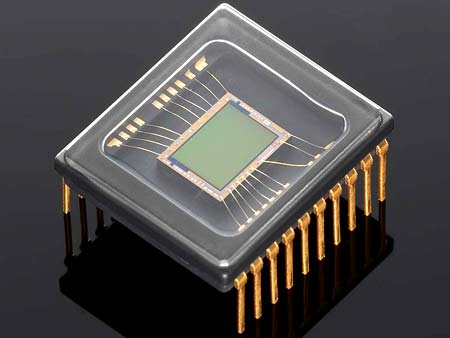When moving into the world of photometry, the observer can come up with a novel preconceived ideas or no idea at all of the precision that will take your measurements. The CCD camera sounds like the Annunaki p the photometric measurement but this claim is among the inaccurate and misleading.
CCD technology really do not think it will disappoint anyone, but you can not independently assess the system opt ico with which you work.

There is a very important factor in the shooting, which is the scale, ie, the angular size on the sky covered by each pixel of the detector. This is given by the ratio between the size of the image element and the focal length, from among the following:

where P is the scale (in arcseconds per pixel; "/ pixel or arcsec / pixel ) μ pixel size in microns F the focal length of telescope or objective.
There
on the web utilities to calculate the scale given a telescope and a particular camera.
doing we must optimize scale images properly selecting a camera based on the optical available, or choose a CCD and a telescope that fit, so that covers the maximum pixel resolvable angular distance on the place of observation, with the equipment available. No mention of the theoretical resolution of the telescope ( Dawes limit), but the resolution allowed by the stability of the air at the observatory, which is often referred seeing.
The stars are scattered, in theory, as can be observed from Earth. But the wave propagation of light, we observe a large spot produced by the diffraction of light. In turn, the atmosphere alter light rays that reach us by enlarging false stellar disk, so that the size the figure is equivalent to the resolution achieved in our sky conditions.
The typical seeing usually two arc second for most locations, and this proves to be an overly optimistic estimate. In the nights are not stable under the 4 "of FWHM (full width at half intensity is like measuring the apparent size of a star on picture and talk about this concept in another post), and if I can stay in 5 "I think I'm singing in the teeth. My telescope is of reasonable quality, but I'm in a very inappropriate remark wing pair that, for example, warming day of the facade makes current flow of unwanted air that degrades the image.
Even with everything we have to accept a conventional value scale to serve as a standard image, and 2 "/ pixel is a valid reference, or a range between 1 and 2" / pixel. From this threshold, with a smaller pixel or a longer focal length would be less than 1 "/ pixel, which is called upsampling (oversampling). This setting is used in applications of high precision astrometry of the stars double for planetary images, or instruments, generally large professional telescopes, which give conditions exceptional seeing (for good quality local sky and the use of adaptive optics). Under no circumstances should be avoided since each star's light is spread over by the CCD pixels.
If the scale is greater than 2 "/ pixel, if the focal length decreases (or the pixel is larger) the conditions would subsampling (subsampling), which would be critical if P> 5" / pixel. Upsampling (oversampling) is not to exploit the maximum resolution that offers the observation, and should be avoided because it allows the light from stars can be collected with maximum efficiency, which photometric and astrometric measurements can not achieve optimal quality.
0 comments:
Post a Comment